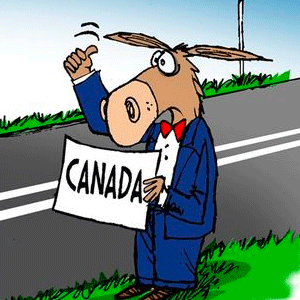New car review: 2006 Subaru Outback
Out here in the boonies of rural SW Virginia, where winters can be long and harsh -- and snowplows few and far between -- Subarus are everywhere. The locals love them because they're unbelievably tenacious, capable of scrabbling up and down snow-covered back roads as well as most 4x4 pick-ups and SUVs. There's also the well-deserved reputation for being tough little muthas that just go and go and go; ancient but still operable '80s-era Brats are a common sight -- and 200,000-plus miles on the clock is par for the course.
These traditional Soobie selling points are what made the original Outback such a smash hit when it appeared way back in 1996. (Has it really been ten years already?) The "world's first sport utility wagon" -- as Subaru advertising christened it -- was an ideal choice for people who wanted a rugged, go-anyplace family vehicle that was easier on gas (and had much better road manners) than a clunky, easy to flip SUV.
Since then, however, other automakers have taken the Outback concept and run with it. AWD-equipped "crossover" sport wagons and sedans are no longer relative rarities. The original needed updating.
It also needed to be upscaled -- at least, that's Subaru's thinking.
The first Outback wagon -- and Subarus in general -- have always been a little on the "woodsy" side. Not economy cars; but more jeans and flannel shirts than Prada handbags and Calvin Klein slacks.
The new Outback is still essentially true to the concept of the '96 model -- with standard go-anyplace AWD (and even more ground clearance -- 8.7 inches vs. 7.3 for the '96 model) and plenty of the original's snarky attitude. But the stance is noticeably sportier. Two-tone body cladding, wagon wheels and whitewalls are out; monochromatic paint schemes, smoothed flanks, fancy-looking alloys and blackwall tires are in -- with just the hint of the devil in the '06 car's slightly crocodilian twin hood bulges. The interior layout is also more in tune with current sport sedan/crossover aesthetic than the previous generation Outback -- with plenty of curves and integrated surfaces blending the dash into the door panels into a single unit that flows naturally through the center console -- instead of the "stacked box" look of the past.
And unlike the first-generation Outback, the current model can be outfitted with a (new for '06) DVD navigation system, 17-inch rims, a Momo wood steering wheel, electro-luminescent backlighting for the instrument cluster, a sophisticated VDC stability control system, mahogany trim inserts, perforated (and heated) leather sport seats, high-end audio, climate control air conditioning and twin sunroofs.
To complete the makeover -- and assure the new Outback's competitiveness with the latest crop of entry-luxury AWD-equipped sport sedans and crossover wagons from Audi, BMW and Volvo -- the '06 Outback also bristles with muscle. Even the base engine -- a 2.5 liter, horizontally opposed four-cylinder -- makes a none-too-shaby 175 hp.
That is 40-hp more than the '96 Outback wagon's 135-hp, 2.2 liter engine -- an uptick of 25 percent. It's a difference you can feel underfoot, too. The original Outback was on the border of being dangerously underpowered; it needed time and room to build itself up to highway merging speeds -- and fast passes were pretty much out of the question. No such problems anymore. Though not blazing fast (by today's standards, at least) the base Outback has enough power to pull into traffic and pass slower cars -- virtual necessities in today's driving environment. It's 0-60 time of about 8.5 seconds is testament to the newfound oats underhood.
And you can step it up considerably if that's not enough by selecting one of two optionally available 250-hp engines. The first is a turbo'd version of the 2.5 liter "boxer" four similar to the one used in the current WRX sport sedan. It is available with either a standard 5-speed manual or five-speed auto with SportShift manual shift control. The other 250-hp engine is a larger 3-liter six that comes only with the automatic. Its mission is to provide easy down-low power and is ideally suited to the automatic transmission -- while the WRX-sourced turbo engine does its best work with the manual gearbox.
This combo is capable of getting to 60 mph in a very impressive 6.5-6.8 seconds -- vs. close to 10 paralyzingly long seconds for the original '96 Outback. The turbo engine requires some skill to extract the best performance, though. You don't just punch it and go. If you do that, it'll bog a little until the boost spools up. It's necessary to work the clutch and gas pedal just right -- to keep the engine in its power band and the turbo's boost dialed up. But this is part of the car's fun; you're involved in the process of forward motion -- not just a spectator who happens to be sitting in the "driver's" seat. (The automatic transmission that can be ordered with this engine is not nearly as enjoyable; if you want to let the transmission take over, you might be better-suited with the H6 engine. It's smoother and the performance of this combo is still very decent.)
You can choose sedan or five-door wagon bodystyles, as before -- with the only downside here being that the trim/engine choices in the sedan configuration are restricted. Specifically, the sedan only comes in Limited 2.5i (with the non-turbo 175-hp engine) trim or the loaded-up L.L . Bean Edition with the 3 liter six (and with or without GPS). If you want the most aggressive powertrain -- the 250-hp turbocharged four and five-speed manual transmission -- you have to buy the wagon. It's the only way to get the sport-oriented XT trim and all the enthusiast goodies that go with it -- including the very nice Momo wood wheel, sport seats, 17-inch rims and high-performance brake package.
The VDC stability control option is also a wagon-only deal -- and you have to get the top-of-the line 3.0 R Limited model ($35,695) to get it.
On the other hand, the wagon does offer more cargo room -- 66.2 cubic feet with the second row seats folded flat. So you can haul stuff -- in addition to hauling you-know-what. But some buyers may not like being pigeonholed into the wagon in order to get the hot-shoe engine and manual transmission -- and it's odd that Subaru would not make this combo available in the sedan given the Outback's new target market.
The base XT 2.5 turbo wagon carries an MSRP of $28,595 (for the manual transmission model) and you can move up to XT Limited ($30,995) and get the same performance goodies with heated leather seats, a wiper de-icing system and dual electric sunroofs to make you more comfy as you bullet down the road.
GPS is also available in XT Limited Outbacks with the automatic transmission (this will boosts the MSRP to $34,195).
The value-friendly 2.5i wagon is another possibility -- it's just $24,795 and perfectly serviceable, with standard 16-inch rims, AC, limited slip rear differential, side impact and curtain air bags, four-wheel disc brakes with ABS, most of the power stuff (windows, locks, cruise) and don't forget, that amazing 40 horsepower uptick as compared to the '96 Outback.
Excepting the restrictive way some of the options and equipment are packaged, the '06 Outback builds nicely on the (ahem) legacy of the original -- and will probably do a good job of expanding Subaru's buyer base while keeping the traditionalists in the fold.
About the Author: Eric Peters is a syndicated automotive columnist and author of "Automotive Atrocities: Cars We Love to Hate (MBI)." His columns have appeared in The Wall Street Journal, Investors Business Daily and Bottom Line Personal Finance. Readers may contact him at EPeters952@aol.com.







Comments